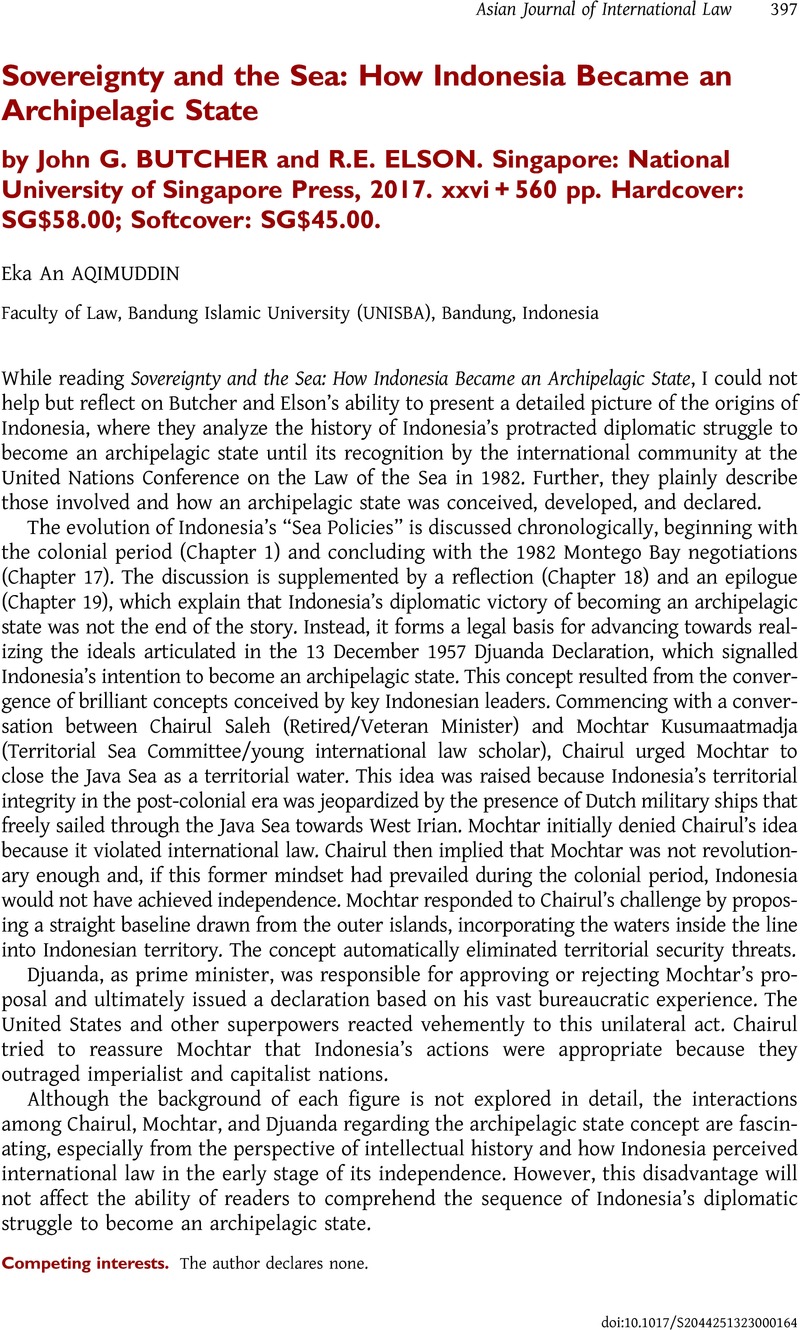No CrossRef data available.
Article contents
Sovereignty and the Sea: How Indonesia Became an Archipelagic State by John G. BUTCHER and R.E. ELSON. Singapore: National University of Singapore Press, 2017. xxvi + 560 pp. Hardcover: SG$58.00; Softcover: SG$45.00.
Review products
Sovereignty and the Sea: How Indonesia Became an Archipelagic State by John G. BUTCHER and R.E. ELSON. Singapore: National University of Singapore Press, 2017. xxvi + 560 pp. Hardcover: SG$58.00; Softcover: SG$45.00.
Published online by Cambridge University Press: 08 June 2023
Abstract
An abstract is not available for this content so a preview has been provided. Please use the Get access link above for information on how to access this content.

- Type
- Book Review
- Information
- Copyright
- Copyright © The Author(s), 2023. Published by Cambridge University Press on behalf of the Asian Society of International Law


